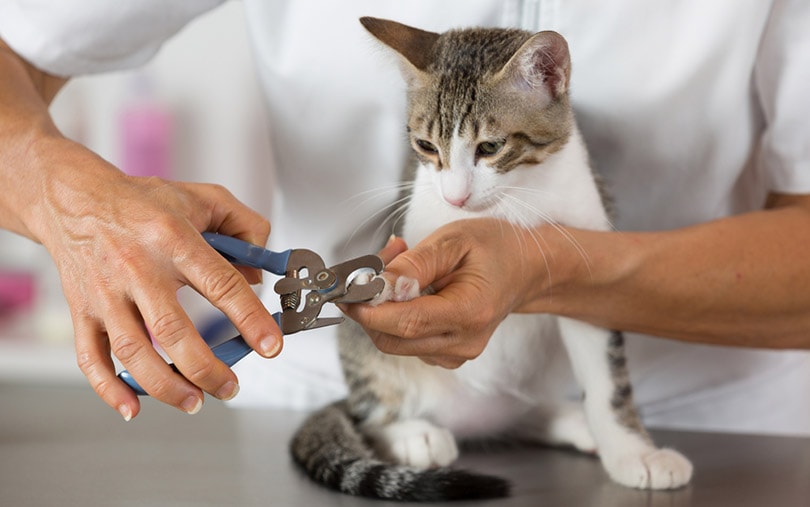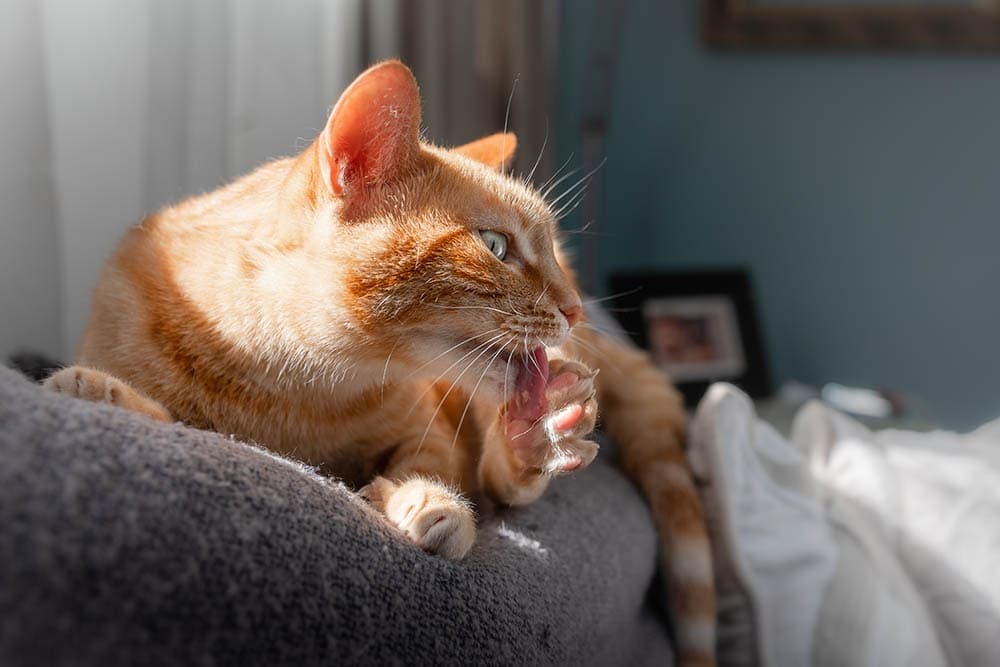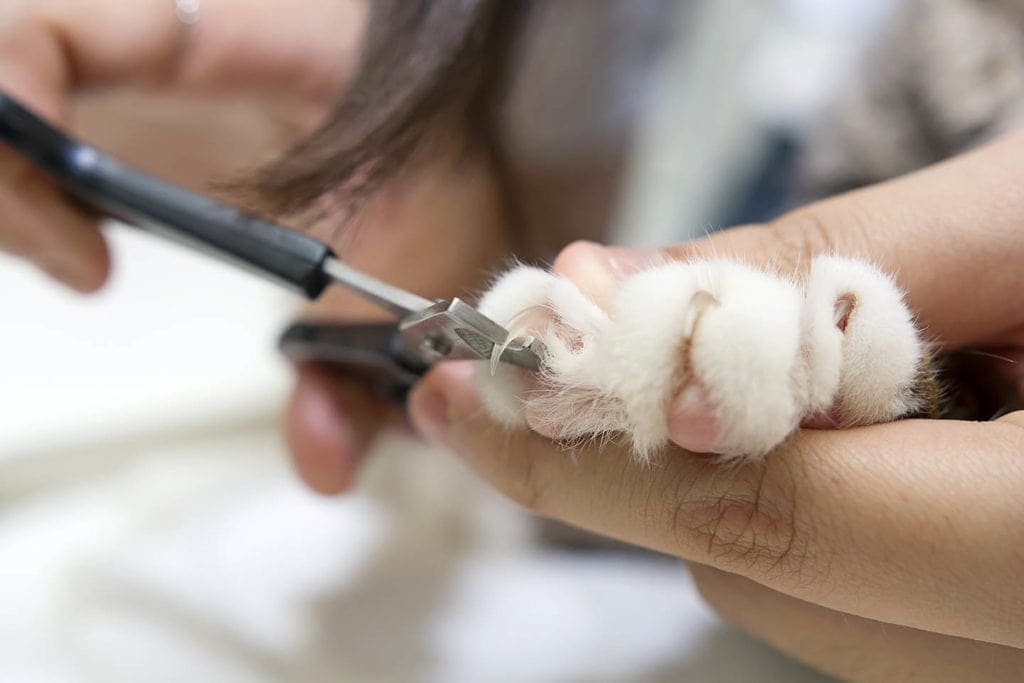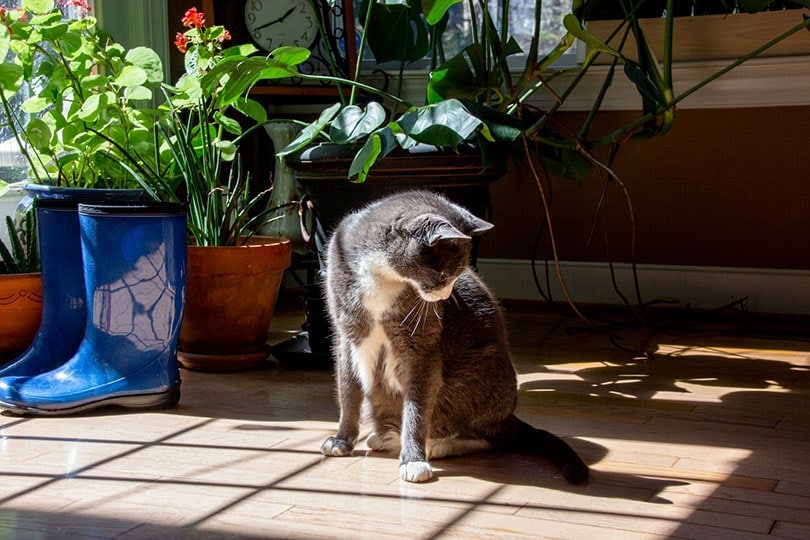How Do Vets Cut Cat Nails: Facts & FAQ (Vet Answer)

Updated on

There are few things more relaxing than having our blissfully snoozing cat curl up contentedly in our lap. In these moments of shared comfort and companionship, we can be forgiven for thinking we can do almost anything with our feline companion. However, as many cat owners will tell you, introduce a pair of nail clippers and the intent to give our feline friend a manicure, and this picture can drastically change! Lots of cats can become wriggly, uncooperative, or even downright difficult, which can be stressful for both the cat and the owner.
Is It Necessary to Trim My Cat’s Nails?
There’s no hard and fast rule as to how often you should trim your cat’s nails. The rate at which your cat naturally wears down its nails is going to vary depending on their age, their activity levels, whether they live indoors or outdoors, and may also be affected by other health conditions they might have. For example, overweight and arthritic cats may be less mobile which could reduce the amount of natural wear on their nails, whereas some medical conditions such as hyperthyroidism1 can increase the rate at which the nails grow.
Providing access to scratching posts and preventing our cats from becoming overweight are two of the main environmental ways we can keep our cats’ nails at an appropriate length and lower the need for nail trimming.

How Do I Know It’s Time to Cut My Cat’s Nails?
Even if your cat is fit and active, it is worth keeping an eye on nail length in all cats, as overgrown nails are prone to getting torn and broken. Even worse, they can sometimes curl around and start to grow into the pads on your cat’s paw, which can be incredibly painful and lead to infection.
If you notice that your cat’s nails frequently get caught up in clothing or blankets, or they sound loud when your cat walks on hard or wooden floors, it may be time for the nails to be trimmed. Equally, if the nails look long or very curly, that might be a sign that it’s time for a trim. Cats retract the claws on their front feet, so a normal-length claw is often mostly hidden in their fur.
Is It Painful for Cats to Have Their Nails Trimmed?
Cats’ nails consist of an internal “quick” that attaches to the end bone in the toe and a pale external keratin shell. The quick appears pink due to the tiny blood vessels within it and should never be cut. However, it is painless to trim the external keratin shell. Some cats (much the same as some young children with their fingers and toenails) dislike the sensation or pressure of the claw being cut or the fact that they’re being restrained; this can make it appear as though they are in pain. Rest assured, if you cut beyond the visible pink tissue then it is not a painful procedure.
Overgrown nails can cause all kinds of problems for your cat's paws. Our Hepper Cat Nail Clipper Set includes everything you need to keep your cat's nails safely trimmed. It includes two sizes of stainless steel clippers complete with ergonomic handles and built-in safety guards. This set is perfect for all ages, sizes, and breeds of cats!
Can I Use Human Nail Clippers to Trim My Cat’s Nails?
It is possible to use traditional human nail trimmers although some types can cause the nails to fracture and break. It’s usually better to use a pair of specially designed cat clippers that look like tiny scissors with a small circle cut out of the blade where the nail is designed to go. While there are lots of different designs of clippers on the market, this sort of simple design is a good option for the vast majority of at-home cat nail trims.

How Do I Trim My Cat’s Nails if They Won’t Let Me?
In an ideal world, we should desensitize our cats to having their paws handled from an early age. Starting as a kitten, practice taking each paw in turn and examining the nails, even if they don’t need cutting at this stage. Offering your kitten some tasty treats, as well as lots of cuddles and praise, will hopefully make them associate this process with something positive.
Even if your cat is now a fully-fledged adult and needs his nails trimmed, the same principles apply. Place your cat on a safe surface such as a lap or a chair and quietly and calmly pick up a paw. It might be helpful to enlist someone to help hold your cat or offer some more of those yummy treats!
Putting some gentle pressure on the pad on the bottom of the paw will help extend the claws into a good position for trimming. To start with, build up to a full nail trim by just doing one paw at a time until your cat is more comfortable with the procedure. Some particularly wriggly cats might benefit from a little additional restraint, in which case a large towel wrapped around the body and three of his legs is the best way to go, while you trim the nails on the remaining leg.
How Much Does It Cost to Trim My Cat’s Nails?
At home, the only expense is a pair of nail clippers, some treats, and your time and patience! However, there are going to be cats that are best left to a professional veterinary technician or groomer. The average cost of this is between $10 and $20 for a routine nail trim. If you notice any blood or damage to the nail or the paw, or if you see any ingrowing nails, your cat needs to see a veterinarian. In these cases, you should expect to pay between $40-60 for a consultation, plus the cost of any additional medication that may be required, for example, antibiotics or pain relief.
Related Reads:
- Can You Use Your Dog’s Nail Clippers on Cats? Tips & Risks
- Creating DIY Live Rock for Saltwater Aquariums (Easy Steps)
Featured Image Credit: 135pixels, Shutterstock













